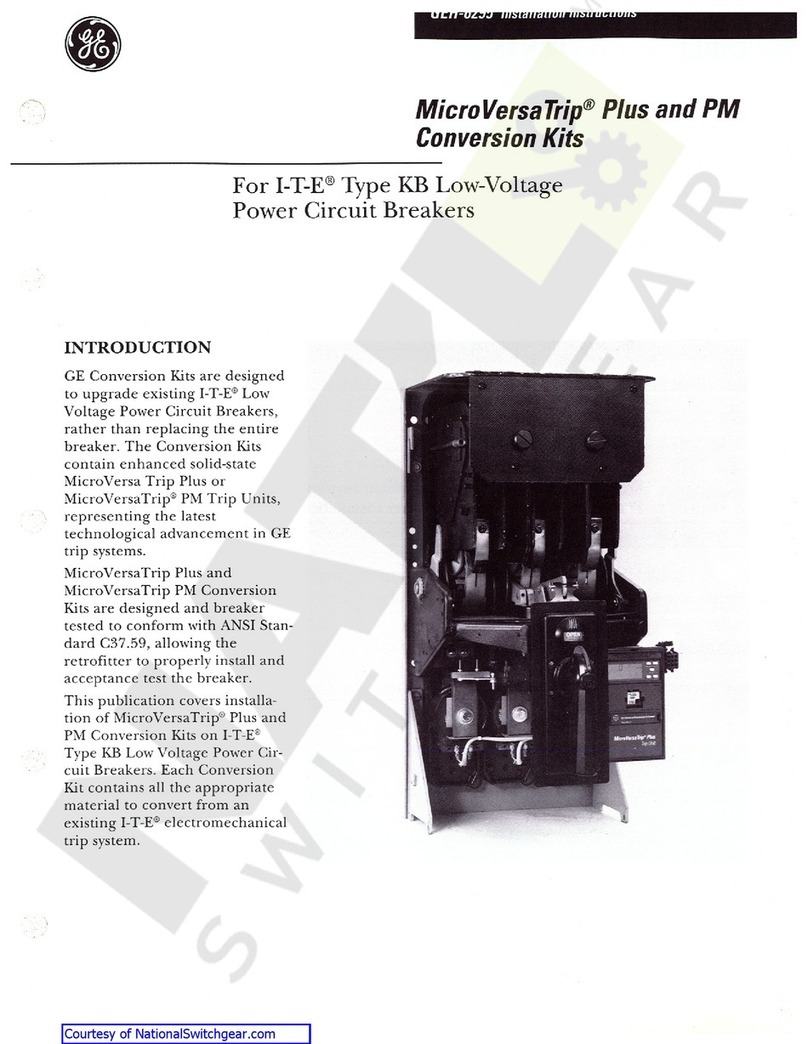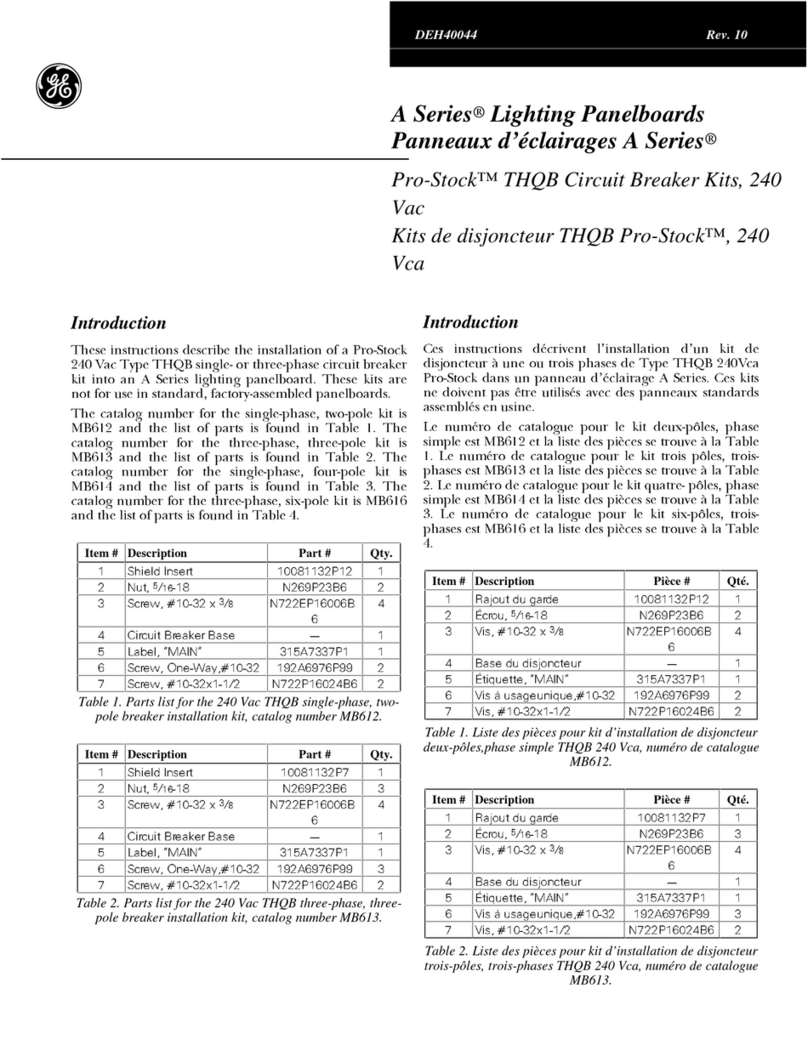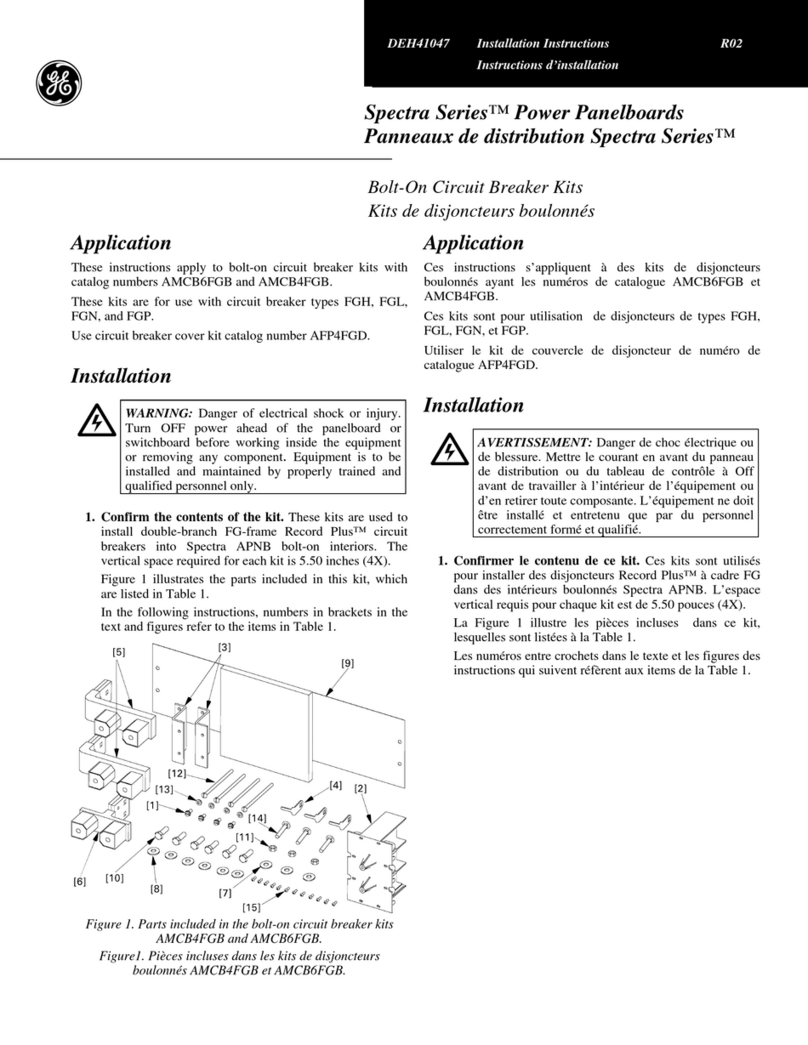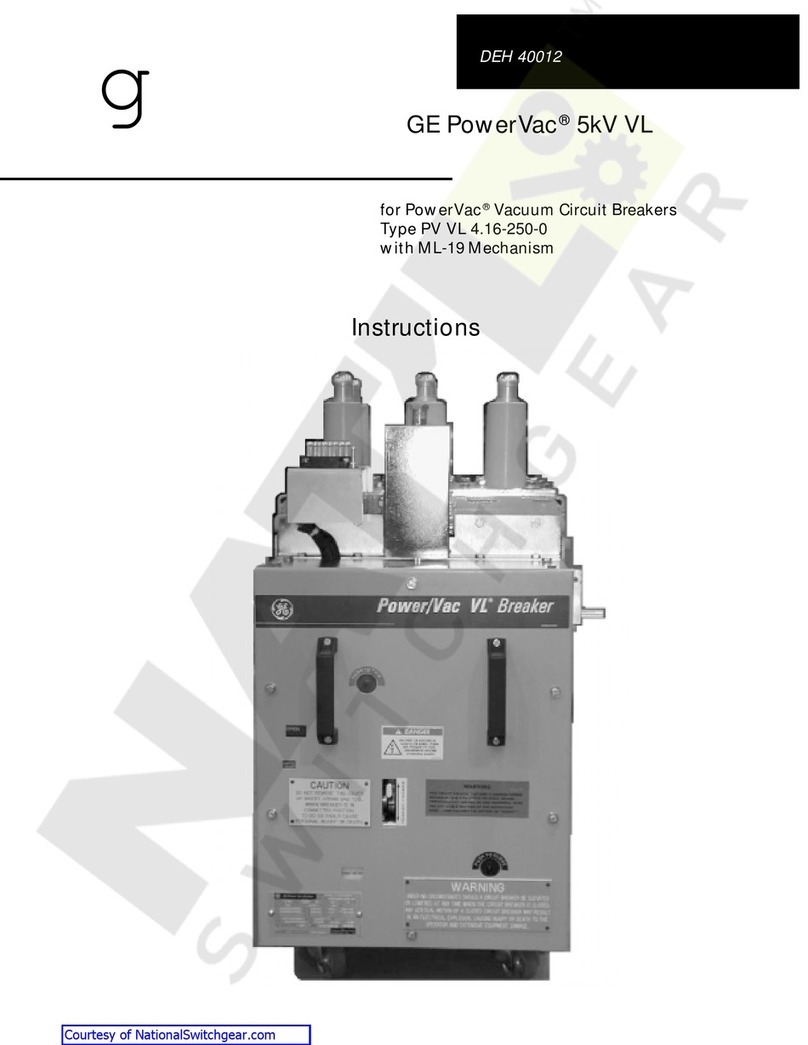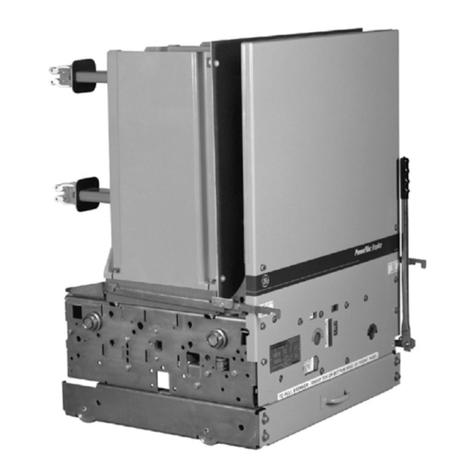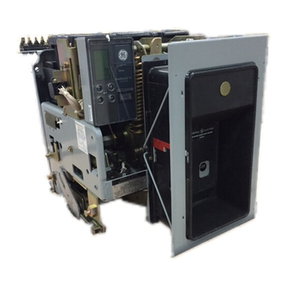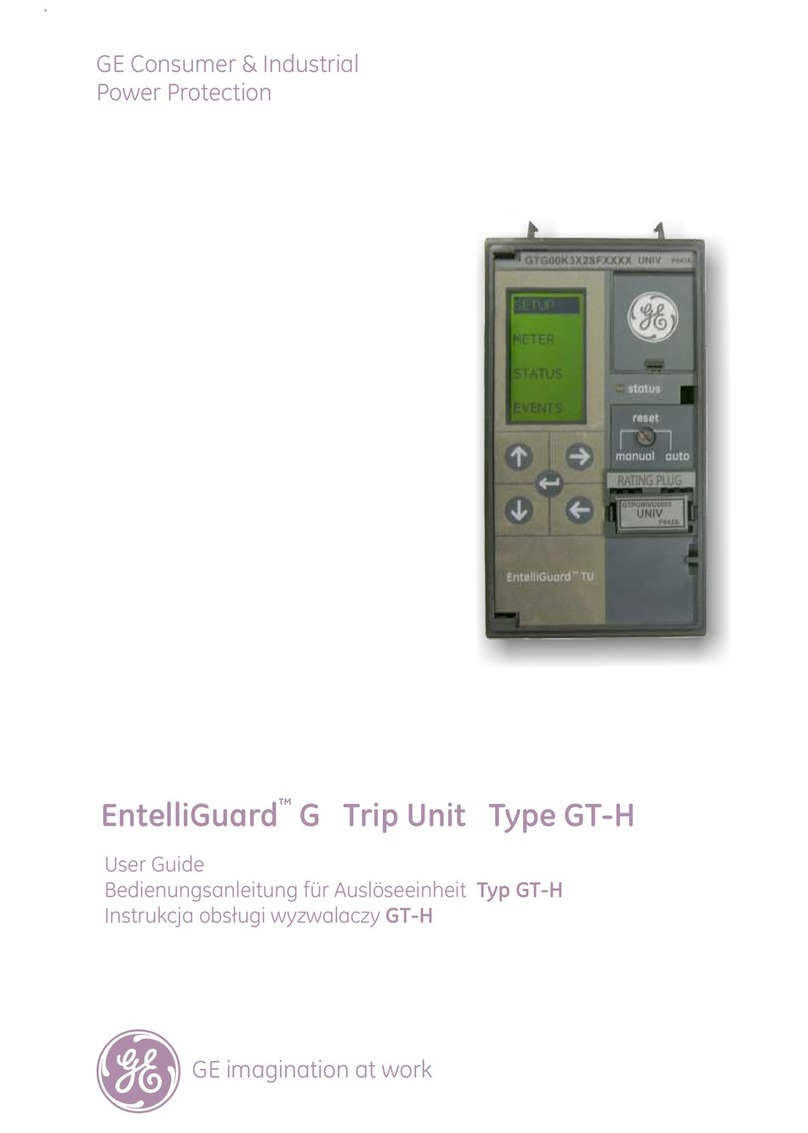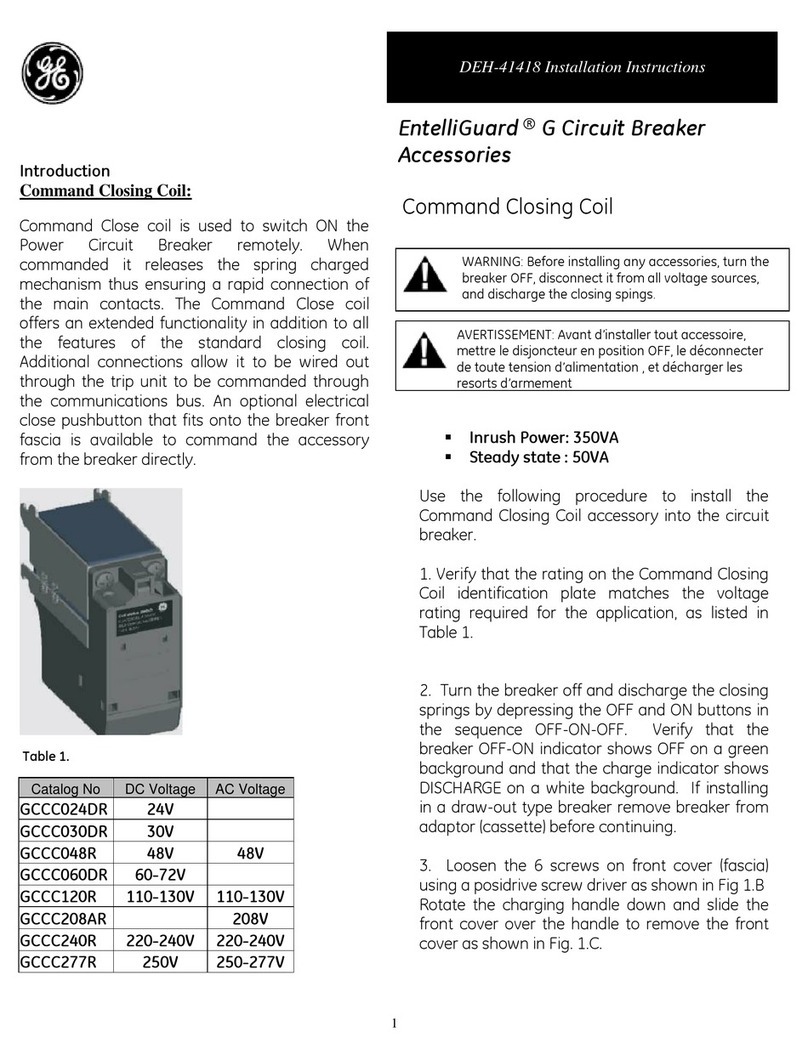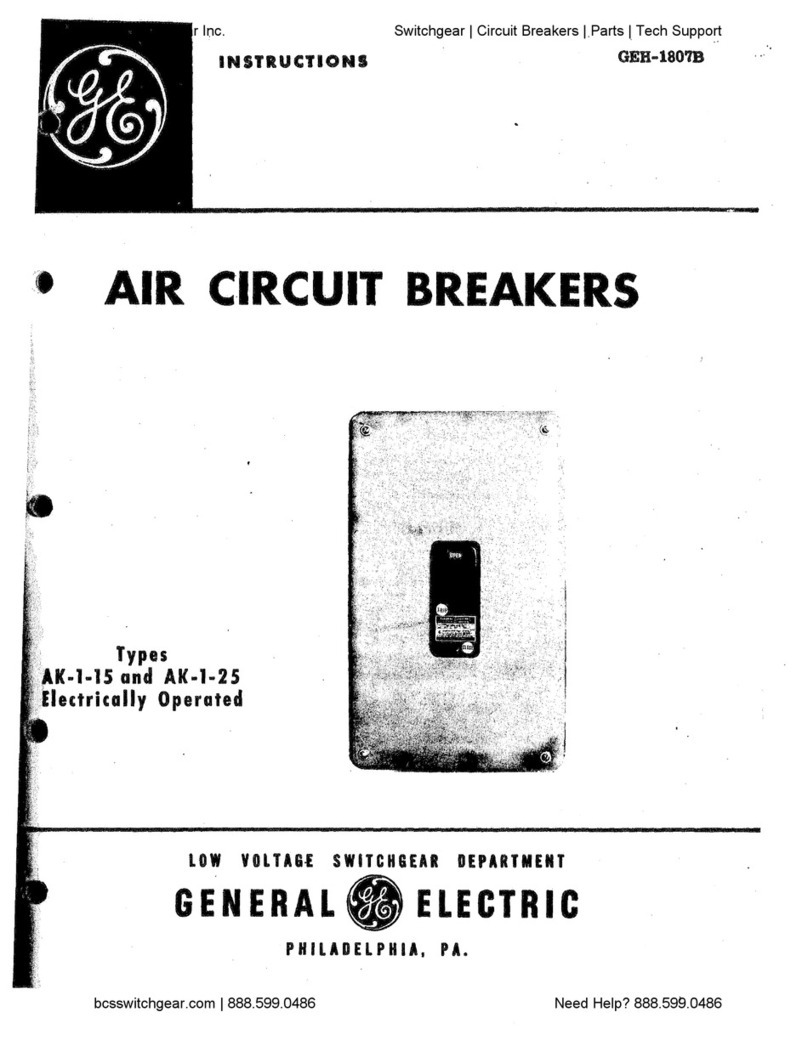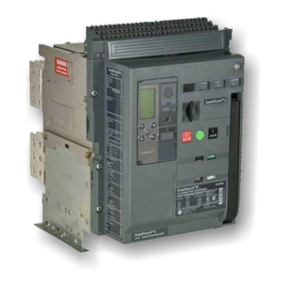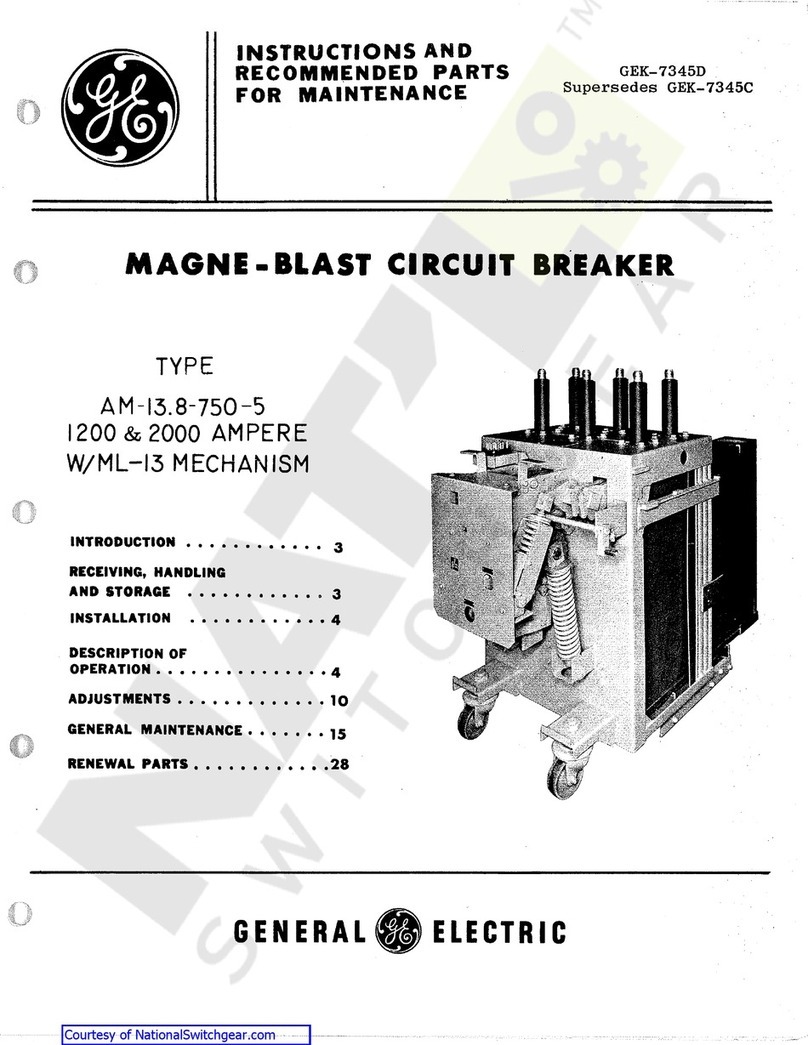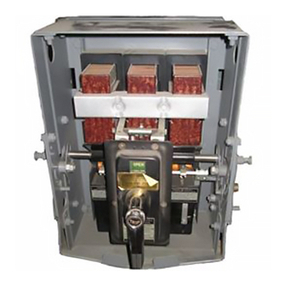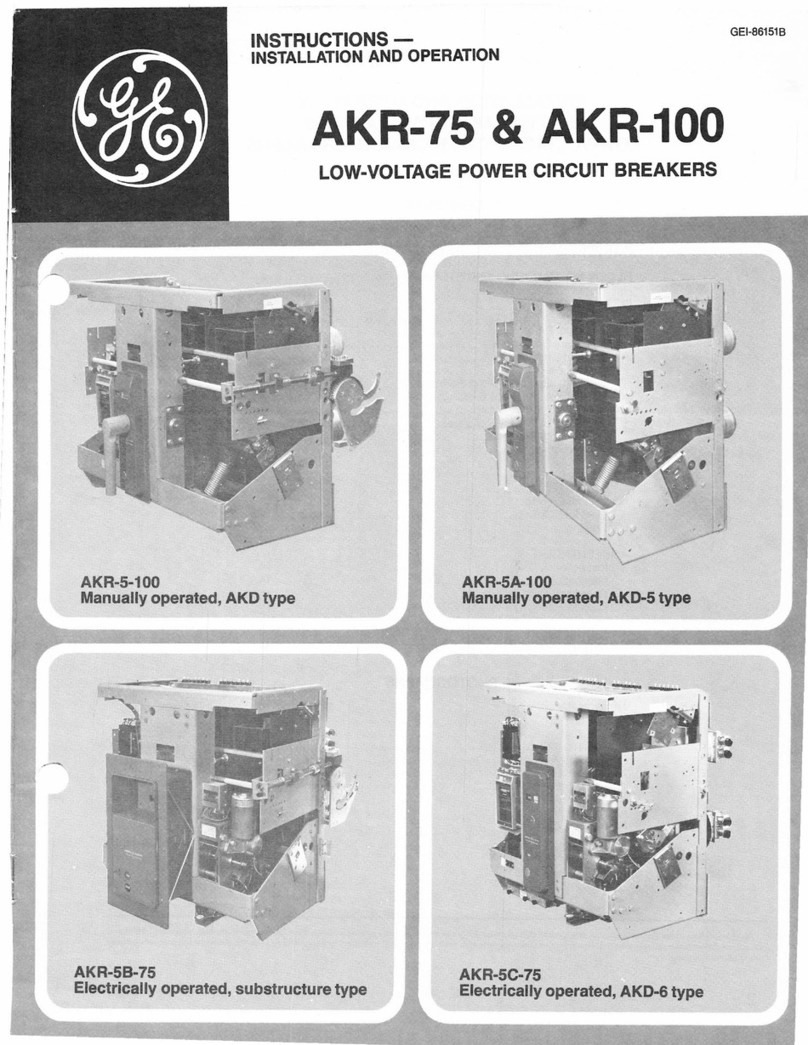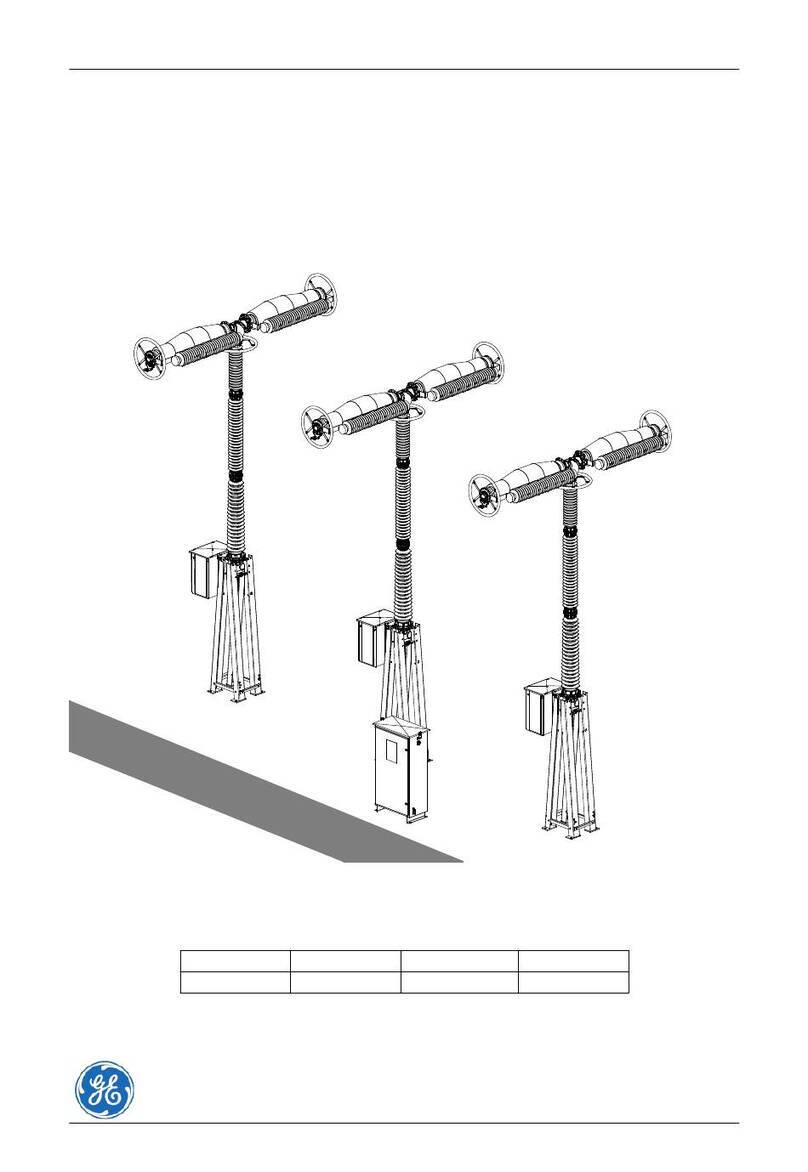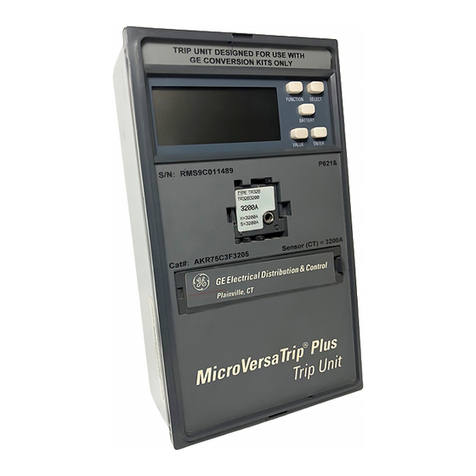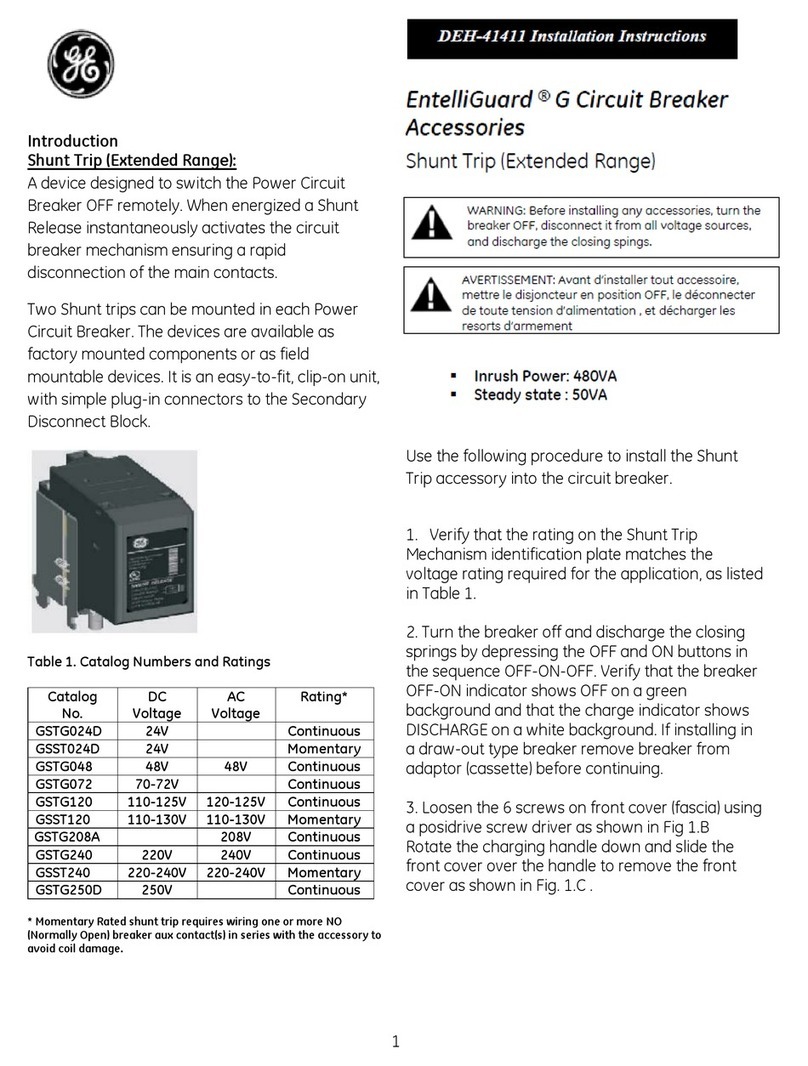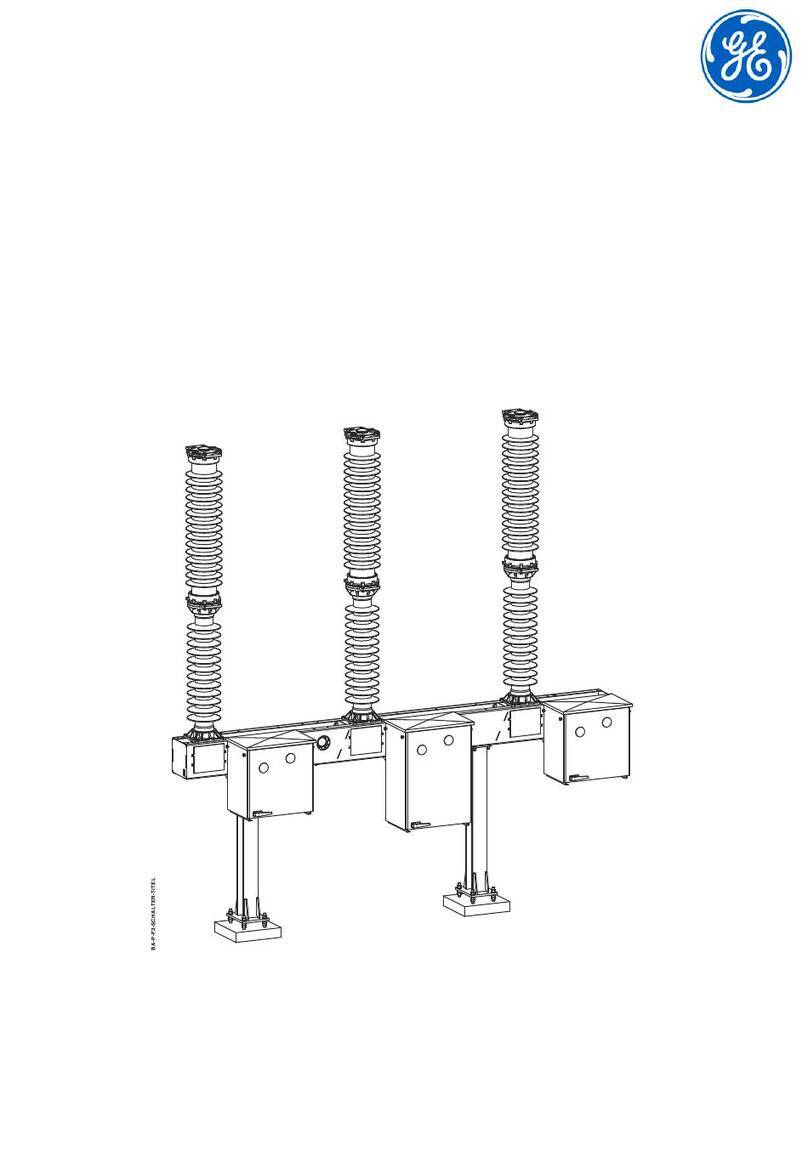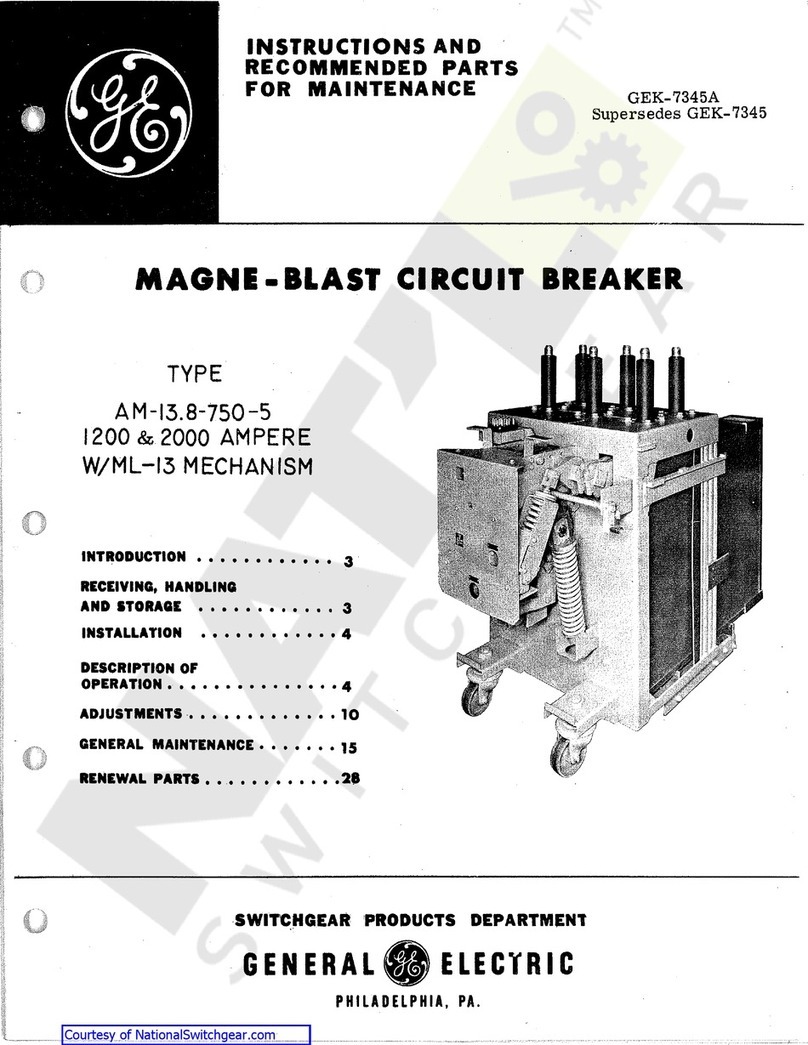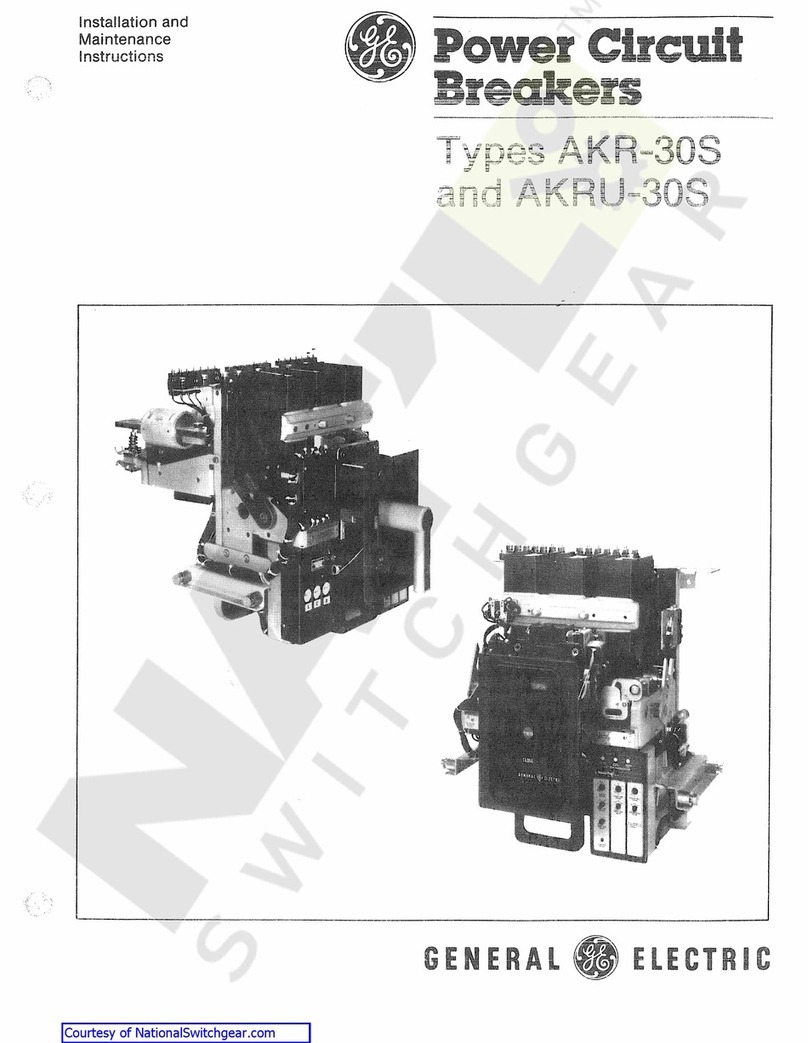
Low-Voltage Power Circuit Breakers
Table of Contents
Description Page
SECTION 1-lntroduction
......................
4
1.1
1.2
Inspection and Maintenance
....................
4
Renewal Parts
...........
,
....................
4
SECTION
2-General
Description
............
6
2.1
Frame Size
...................................
6
2.2
Operation . . . . . . . . . . . . . . . . . . . . . . . . . . . . . . . . . . . . 6
2.3
Mounting
.....................................
7
2.4
Trip Device
...................................
7
2.5
Short Circuit Ratings
...........................
7
SECTION
3-Storage,
Safety and
Maintenance
....................
9
3.1
Storage
......................................
9
3.2
Safety
.......................................
9
3.3
Maintenance
..................................
9
SECTION
4-Breaker
Operation
.............
10
4.1
Manual Closing
..............................
10
4.2
Electrical Closing
.............................
10
4.2.1
Alternate Control Circuit
.......................
11
4.3
Connections
.................................
12
4.3.1
Stationary Breaker
............................
12
4.3.2
Drawout Breaker
.............................
12
4.4
Tripping
.....................................
13
4.5
Charging and Closing Using
the Maintenance Handle
.......................
13
SECTION
5-Contact
Maintenance
.........
14
5.1
Slow Closing the Breaker
......................
14
5.1.1
Electrical Breaker
.............................
14
5.1.2
Manual Breaker
..............................
14
5.2
Arc Quencher Removal and Inspection
...........
15
5.2.1
Removal and Replacement
.....................
15
5.3
Separation
of
Front and Back Frames
............
16
5.4
Back Frame Assembly
.........................
18
5.5
Measuring Contact Force
......................
19
5.5.1
Stationary Arcing Contacts
....................
19
5.5.2
Stationary Main and Intermediate Contacts
.......
19
5.6
Measuring Contact Wipe
.......................
19
5.7
Adjusting Contact Wipe
.......................
19
5.8
Measuring Contact
Open
Gap
..................
21
5.9
Checking Contact Sequence
...................
22
5.10 Replacement
of
Contacts
......................
22
5.10.1
Stationary Arcing Contacts
....................
22
5.10.2
Movable Arcing Contacts
......................
22
5.10.3
Movable Main and Intermediate Contacts
........
23
5.10.4
Stationary Intermediate and Main Contacts
.......
24
5.11
Assembly and Adjustment
of
Crossbar
...........
25
© 1993 GENERAL ELECTRIC COMPANY
2
Description Page
SECTION
6-Breaker
Maintenance
.........
26
6.1
Safety Precautions
...........................
26
6.2
Lubrication
..................................
26
6.3 Breaker Mechanism Adjustments
...............
26
6.3.1
Trip Latch
...................................
26
6.3.2
Latch Buffer
.................................
26
6.3.3 Reset Latch Bearing and
Prop
..................
26
6.4 Electrical Mechanism
.........................
28
6.4.1
Control Components
..........................
28
6.4.2 Charging Motor
..............................
29
6.4.3 Motor Operator Unit
...........................
30
6.4.4 Spring Discharge Interlock
.....................
32
6.5 Manual Mechanism
...........................
32
6.5.1
Mechanism Part Replacement
..................
33
6.5.2
Ratchet Pawl Replacement
.....................
35
6.5.3 Adjustments
.................................
35
6.6 Drawout Mechanism
..........................
36
6.7
Drawout Mechanism Lock
......................
36
SECTION
7-Accessories
....................
37
7
.1
Primary Disconnects
..........................
37
7.1.1
AKA 75/100
..................................
37
7
.1.2
AKS/AKST
50
................................
38
7.2
Secondary Disconnects
.......................
39
7.2.1
Replacement
................................
39
7.3
Auxiliary Switch
..............................
40
7.3.1
Replacement
................................
40
7.3.2
Adjustments
................................
40
7.4
Shunt Trip
...................................
41
7.4.1
Replacement
................................
41
7.4.2
Adjustment
..................................
41
7.5
Undervoltage Device
..........................
42
7.5.1
Replacement
................................
42
7.5.2
Adjustment
..................................
42
7.6
Static Time-Delay Undervoltage
.................
43
7.7 Electric Lockout Device
........................
44
7.7.1
Adjustment
..................................
44
7.8
Bell Alarm Device
.............................
45
7
.8.1
Adjustment
..................................
45
7.9
Open Fuse Lockout Device
.....................
46
7.9.1
Coll Replacement
.............................
46
7.9.2
Adjustments
.................................
46
SECTION
8-
Type SST Overcurrent
T'
D .
np
ev1ce
......................
47
8.1
Programmer Unit
.............................
47
8.2
Current Sensors
..............................
48
8.2.1
Replacement of Current Sensors
-AKS
50
.....................................
50
8.2.2
Replacement
of
Current Sensors
-AKA 75/100
.................................
51
8.3
Flux Shift Trip Device
..........................
51
8.4
Troubleshooting
..............................
54
8.4.1
SST
Test Set
.................................
54
Courtesy of NationalSwitchgear.com
